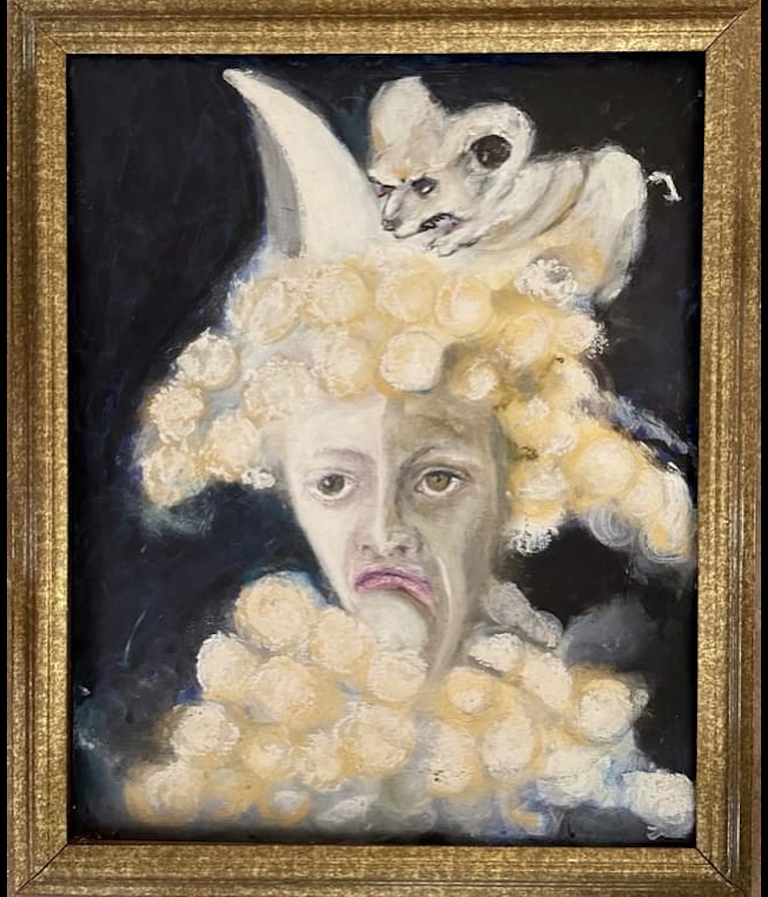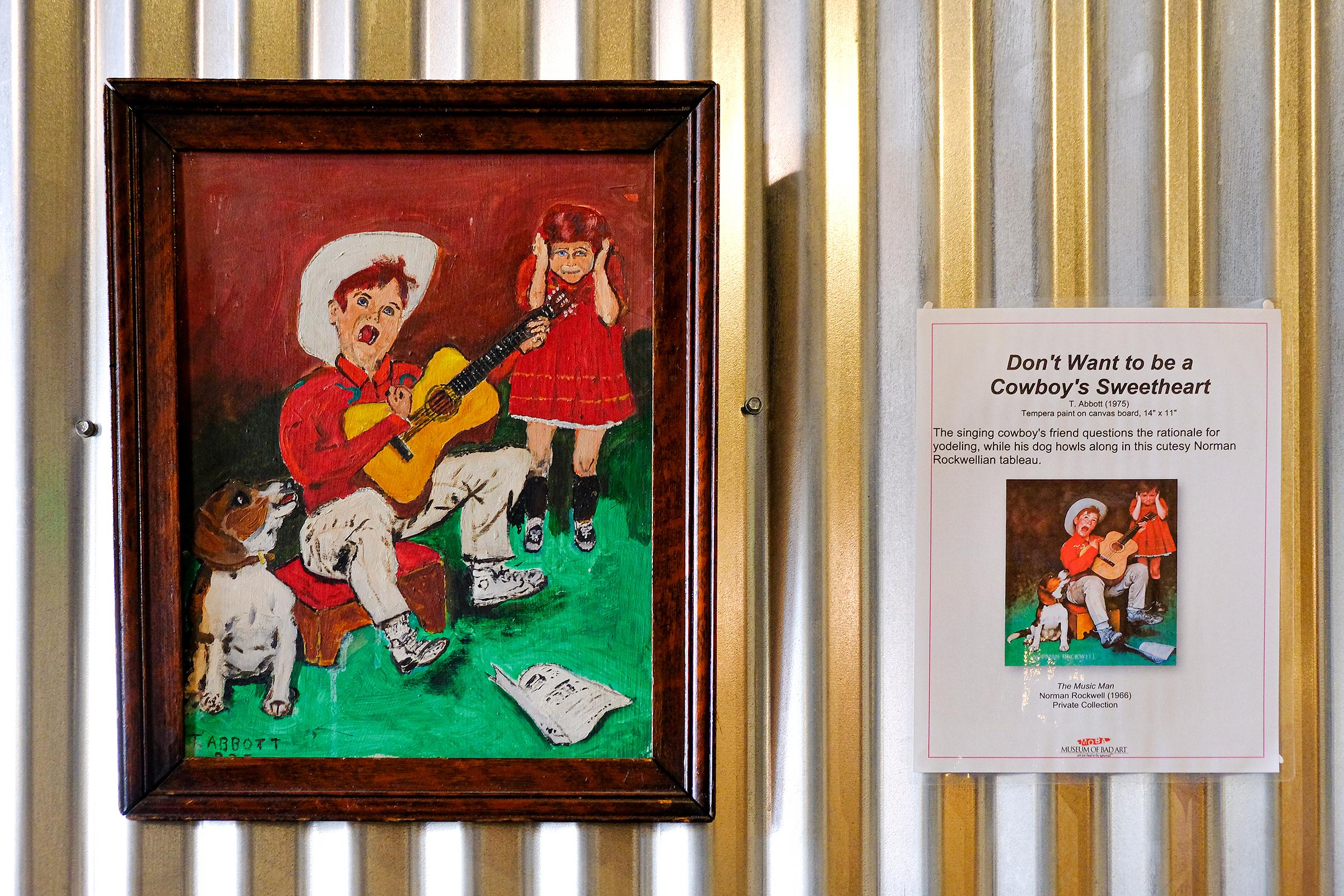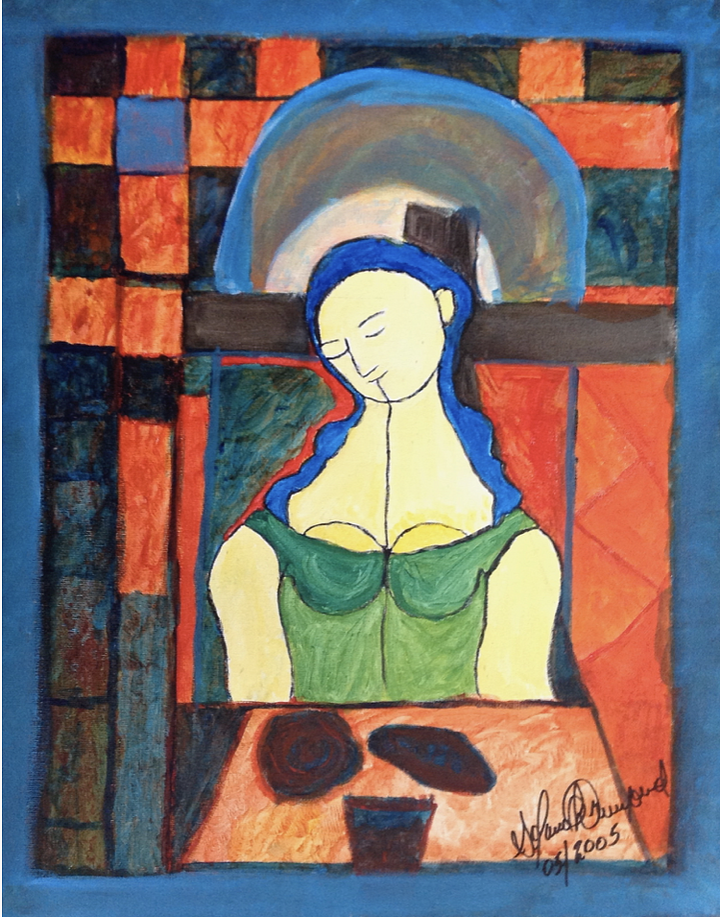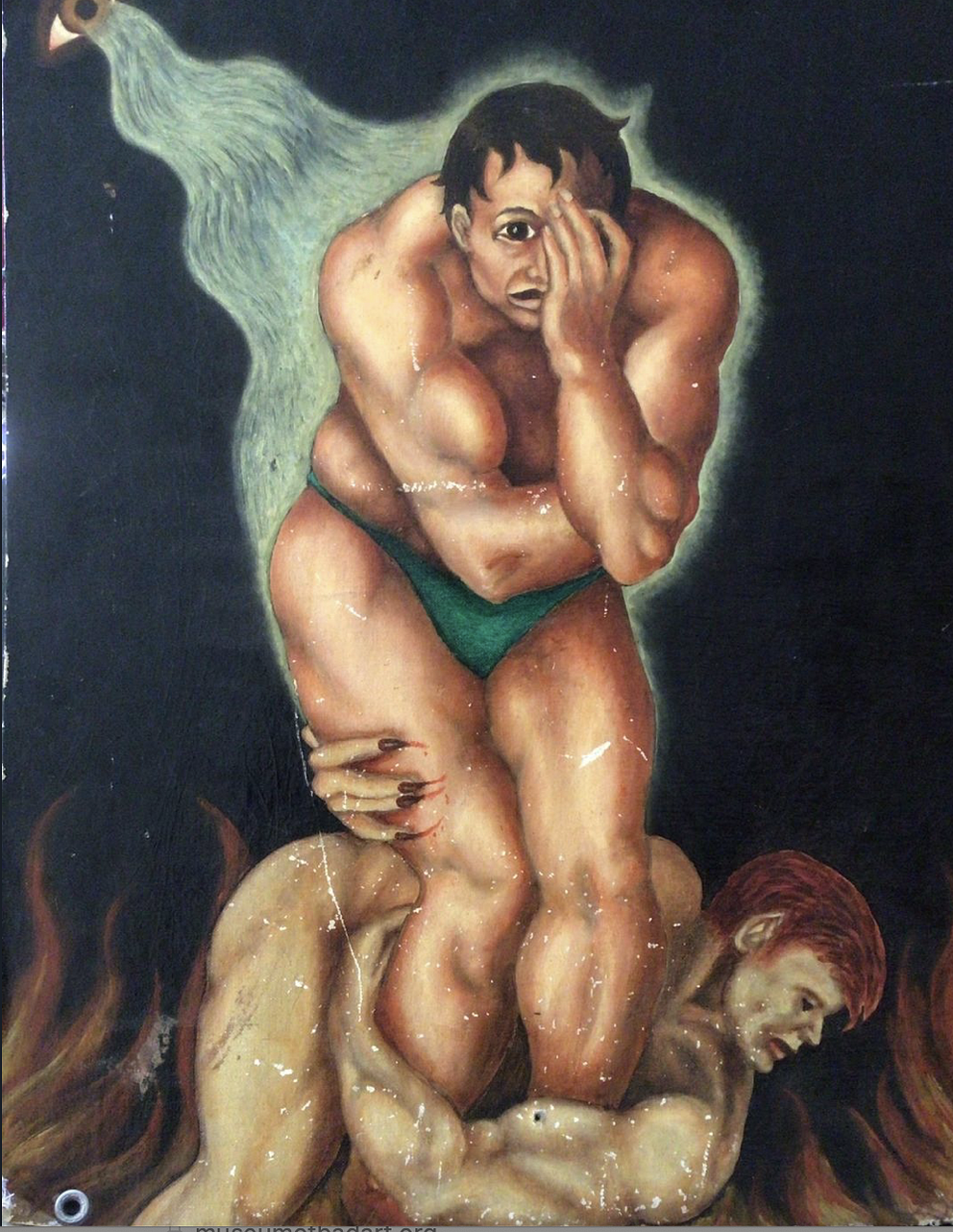
Museum of Bad Art
1250 Massachusetts Ave.
Boston, Mass. 02125
I was gazing upon a Michelangelo. Except, it wasn’t a Michelangelo. It was an artist’s painstakingly recreated version of “The Damned Man,” a figure in The Last Judgement fresco on the altar wall of the Sistine Chapel who realizes he has been condemned to spend eternity in Hell. The oil on canvas before me, titled “The Damned Guy,” was painted by Clarence Leroy Hinds and hangs in The Museum of Bad Art. A caption on the wall nearby reads: “The artist sought to improve upon Michelangelo’s masterpiece by clothing him in a bright green Speedo, and adding a disjointed eyeball over his left shoulder spewing what appears to be toxic slime.”
The Museum of Bad Art, located in the Dorchester Brewing Company, is as delightful and bizarre as its name implies. The paintings, sourced from thrift stores, rescued from the trash, or donated by the artists or their families, are truly questionable.
Some pieces make you think, “Why?” such as a portrait of Nikola Tesla playing with a bubble wand over a boiled lobster. Some pieces make you think, “Why not?” like one of my personal favorites, “New Year’s Bagel” by Mari Newman, featuring a bagel with bagels for eyes toasting other bagels with a bottle of champagne.
Some of the work, like “The Damned Guy,” take their inspiration from famous works, like Johannes Vermeer’s painting “De Melkmeid,” or Rembrandt’s “Belshazzar’s Feast.” The descriptions on the wall show the original paintings alongside snarky captions, lending a fairly educational experience. Others, like a painting of a sinister demon surrounded by what appear to be marshmallows, teach nothing.
The Museum of Bad Art has over 800 pieces in its collection, some of which can be viewed online. (Online collections include “Dopplehangers,” “In the Nood,” “Look Ma, No Hands!” and “Oozing My Religion.”) The museum is a great way to pass some time, see some bad art, and have a laugh while washing down your woes with a pint. (The Dorchester Brewing Company, while not the subject of this review, is also a beautiful location in its own right, complete with a rooftop greenhouse and outdoor roof deck, in addition to a game room and a pretty spectacular view of Boston).

Perhaps despite itself, the museum does serve as a meditation on art itself. What exactly qualifies as bad art?
After all, some of the work on display is undeniably worse than others. A cat posing over a cornucopia of fruit is painted with competent detail and shading, although the cat’s unconventionally-spaced eyes do have an unfocused, haunting quality. “Very Bighorn Sheep,” is expertly executed, though the subject matter is a touch bizarre. (The caption reads, “A family in the Rocky Mountains encounters some surprisingly large wildlife very close to their Airbnb.”) More than once I caught myself staring at a piece and thinking that I would be over the moon if I ever managed to produce something halfway as capable.
Certainly, the Museum of Fine Arts, Boston is filled with its own fair share of guffaw-worthy frilly babies, overly-expressive horses, weird dream demons, and awkwardly-posed aristocrats. Maybe this is something I shouldn’t admit, but wandering the Museum of Bad Art didn’t feel too different from wandering any other contemporary art museum that forces you to wrestle with your notion of what art is.
Even in The Museum of Bad Art, there is a certain art to being “bad.” The museum is curated, after all. Art that falls just short of great is mediocre, but to be bad enough to land in the Museum of Bad Art is to have achieved a superlative. I couldn’t help thinking of movies like The Room, which have been deemed so terrible that they’ve made the turn back to cult classic, or Alexander McCall Smith’s “The Really Terrible Orchestra,” who ride the line of just good enough to be palatable, yet bad enough to be endearing.

So is bad art just the equal and opposite of good art? What happened to good old mediocrity? Is the lesson here that everything needs to be exceptional, good or bad?
As a poster on the wall explains, “To be accepted into the MOBA Collection, the work must have been created by someone seriously attempting to make an artistic statement — one that has gone horribly awry in either its concept or execution.” The museum does not collect the art of young children, or paint-by-numbers, or artists who crank out paintings for tourists. It also emphasized that bad technique was not enough to gain admission to the collection, and that the artwork itself had to constitute a compelling image.
It was for this reason, perhaps, that I didn’t come away with the impression that The Museum of Bad Art was simply mocking its artists or making some sort of anti-art statement. As their delightfully-written website explains, the Museum of Bad Art is “the world’s only museum dedicated to the collection, exhibition, and celebration of bad art in all its forms” — and the museum does feel like a celebration.
There’s something wonderfully humanizing about seeing art made by the rest of us. Those of us who have tried. Those of us who have failed. The museum seems to be cheering the underdogs, delighting in the weird and the humorous and the ridiculous and reminding us not to take everything so seriously.
And of course, on a personal note, it’s also gratifying to write a review where I can finally, confidently say that the art was bad.







